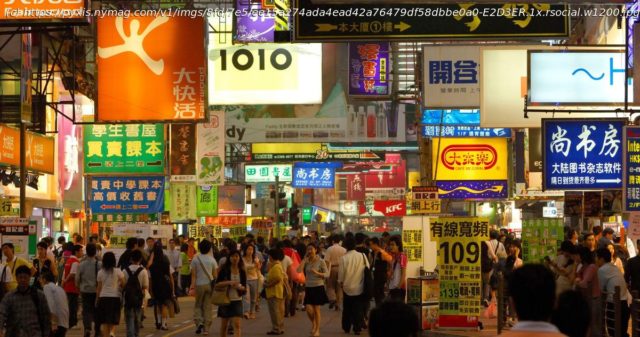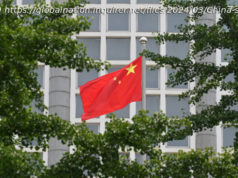Since 2019, my hometown has slowly transformed into a brutal, unrecognizable place. Then came Omicron.
Every time I think about Hong Kong, I inevitably return to the water — the masked couples making out in cars facing the smoggy sunset by Stonecutters Bridge; the tourists jostling before the postcard-perfect view of the harbor from Avenue of Stars at Tsim Sha Tsui; the tranquil walks along the reservoirs at the country parks surrounding the city. In the last few decades, Hong Kong has frequently been referred to as a global financial center, but the city first gained significance as a major port in the early 20th century; its fate has always been intimately tied to its waters. I know that were I to ever leave, they would be what I would miss most. I was born not long before the handover in 1997, when Hong Kong was to cease to become a British colony and be handed to China. The event had triggered an emigration wave: There were whispers of how Hong Kong would change, and many left because they did not want to be under Communist rule. But change came slow, and borders remained free. Within a decade, Hong Kong had developed a regular protest calendar, with thousands marching through a dense network of skyscrapers in the financial district on set days every year to voice discontent and commemorate anniversaries. Over time, the city became, for the post-handover generation, less a place of transition, a stepping-stone for better lives abroad, but a place worth fighting for. After the national security law passed in June 2020, friends began leaving Hong Kong every few weeks. One by one, they disappeared from the camera reel on my phone, leaving me with things they couldn’t take with them: an oven, a Sodastream, a sous-vide machine, a stone diffuser, and five bottles of ground cinnamon. From 2020 through 2021, it was reported that 116,000 residents had left, often departing for countries like Britain and Canada, which, amidst the turmoil, announced residency schemes for Hong Kongers. Every other day on social media, someone pens a eulogy for the city. They were leaving; there was no way to plan for a future in this place, where every day brought about an unexpected change to the existing set of rules. Hong Kong had “become a place that could no longer tolerate truth,” pollster and moderate commentator Chung Kim Wah said earlier this year. He was born and raised here, but he craved broader skies and fresher air where he would no longer have to worry about shifting red lines. In late February, local news outlets published photographs of horrifying scenes in public hospitals: corpses sitting in gray bags next to living patients in an overcrowded emergency ward, senior citizens lying underneath outdoor tents on a freezing night in February. Afterwards, I spoke to Jasper, a young nurse in Kowloon who asked to go by this name to speak without repercussions. Jasper works in a public hospital that serves an aging population; this devastation, she says, is the direct result of both the government’s overconfidence in its healthcare system and of the strategy it chose to tackle the outbreak. Under the city’s elimination strategy, strict rules were put in place such that anyone who tested positive could be sent to hospitals or isolation facilities. As a result, rather than staying at home to recover, many COVID patients experiencing mild symptoms initially flocked to the hospitals and quickly crippled the system. By mid-February, only weeks after Omicron hit Hong Kong, the waiting rooms of Jasper’s hospital were so inundated that beds were spilling into the corridors. In the emergency rooms, four nurses could be looking after more than a hundred patients per shift. Days or even weeks later, Jasper said, when patients were finally transferred to the isolation wards, their conditions could have deteriorated. It would only be a matter of time before they passed away. Amid the crisis, residents in Hong Kong were forced to confront the realities of what it meant to live in a place where nobody in charge was popularly elected by the people. Over in China, the Communist government had implemented a zero-COVID policy, prioritizing lockdowns and restrictions rather than mitigation, and Hong Kong followed suit. During the outbreak, almost everyone I knew lived not in fear of catching COVID, but of the arbitrariness they may be subjected to should authorities find out they caught the illness, or came in close contact with someone who did. Health officers would sometimes appear on your doorstep to inform you that your building had been locked down for mandatory testing; should you test positive, you would have to undergo quarantine at an isolation facility, which Hong Kong residents have described as a “madhouse.






